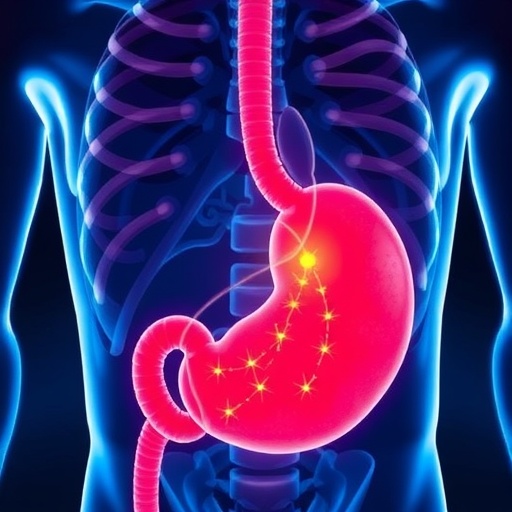Researchers across China have conducted a landmark nationwide real-world study examining the efficacy and safety of mecapegfilgrastim prophylaxis in preventing chemotherapy-induced neutropenia (CIN) among patients with non-myeloid malignancies. This prospective investigation, spanning 46 medical centers and involving nearly three thousand patients, offers robust evidence underscoring the therapeutic value of mecapegfilgrastim outside the context of tightly controlled clinical trials. The findings are poised to significantly influence clinical practice and supportive care protocols for cancer patients undergoing chemotherapy.
Chemotherapy-induced neutropenia remains a grave complication for patients receiving cytotoxic therapies. Characterized by a sharply reduced neutrophil count, CIN heightens patients’ vulnerability to infections, often necessitating dose reductions, treatment delays, or hospitalization. Managing this condition effectively is critical to maintaining chemotherapy dose intensity and improving overall patient outcomes. While granulocyte colony-stimulating factors (G-CSFs) have been widely adopted to mitigate neutropenia, the quest for optimized agents and regimens is ongoing.
Mecapegfilgrastim, a pegylated form of filgrastim, extends the half-life of the conventional G-CSF, thereby decreasing injection frequency and enhancing patient convenience. Prior clinical trials have demonstrated its efficacy and safety; however, real-world data remain sparse, especially within diverse patient populations. This Chinese nationwide real-world study bridges that gap by systematically evaluating safety profiles and neutropenia prevention across multiple chemotherapy cycles in a heterogeneous cohort.
The study enrolled 2,859 patients diagnosed with a spectrum of non-myeloid malignancies between June 2019 and March 2022. These participants received standardized subcutaneous injections of mecapegfilgrastim approximately 24 hours post-chemotherapy. Observations spanned four consecutive chemotherapy cycles, enabling the assessment of longitudinal outcomes. Primary endpoints centered on safety evaluations, whereas secondary endpoints included incidence rates of grade 3 or higher neutropenia, grade 4 neutropenia, and febrile neutropenia (FN).
Importantly, the treatment-related adverse event (TRAE) rate was relatively modest, with 11.5% of patients experiencing some form of TRAE. The most frequent adverse event reported was an increase in white blood cell count, occurring in just 3.6% of cases. Severe adverse events graded 3 or higher were rare, affecting only 1.0% of the patient population. These safety metrics highlight mecapegfilgrastim’s tolerability in a broad, real-world clinical setting.
When delving into neutropenia incidence during the first chemotherapy cycle, the study recorded that 8.3% of patients experienced grade 3 or higher neutropenia, with 4.4% suffering grade 4 neutropenia. Febrile neutropenia, a serious complication marked by fever alongside neutrophil depletion, occurred in a notably low 0.8% of cases. When aggregated across all observed cycles, the respective incidences decreased further, evidencing sustained protection provided by mecapegfilgrastim over time.
A particularly compelling aspect of this study is the comparison between primary and secondary prophylactic strategies. Primary prophylaxis—administered proactively before any neutropenic episode—correlated with significantly lower incidences of grade 3 or higher neutropenia and grade 4 neutropenia in the initial cycle, measured at 7.9% and 4.1%, respectively. In contrast, secondary prophylaxis, given reactively after an initial neutropenic event, was associated with incidences of 11.2% and 6.7% for the same grades of neutropenia. This underscores the clinical advantage of early intervention.
The mechanistic basis for mecapegfilgrastim’s efficacy lies in its ability to stimulate proliferation and differentiation of neutrophilic granulocyte precursors in the bone marrow. By sustaining adequate circulating neutrophil levels, it mitigates the immunosuppressive sequelae often induced by cytotoxic agents. Its pegylation confers pharmacokinetic benefits, including extended plasma half-life and reduced renal clearance, which translate into less frequent dosing and improved patient adherence.
Furthermore, the ease of administration—one injection per chemotherapy cycle—facilitates integration into complex oncological treatment plans where minimizing additional patient burden is paramount. This is especially pertinent in China’s vast healthcare landscape, where resource optimization and patient accessibility remain ongoing challenges. The nationwide scope of the study provides compelling evidence applicable to diverse healthcare settings.
The low incidence of febrile neutropenia observed offers an additional layer of clinical reassurance. FN often prompts emergency hospitalization and broad-spectrum antibiotic use, contributing both to healthcare costs and patient morbidity. By effectively reducing FN rates, mecapegfilgrastim prophylaxis may confer economic benefits alongside improved quality of life for patients undergoing chemotherapy.
It is interesting to note that the study’s prospective design and real-world context enhance its external validity. Unlike randomized controlled trials that operate under stringent inclusion criteria, this investigation captures the heterogeneous realities of oncology practice, encompassing varied malignancy types, chemotherapy regimens, and patient comorbidities. Results thus bear significant translational potential.
While the study focused on patients with non-myeloid malignancies, the positive data invite exploration of mecapegfilgrastim’s role in other oncological and hematological contexts. Given its safety profile and efficacy demonstrated here, future trials may consider its application in more complex or refractory cancers, combination immunotherapies, and in settings where neutropenia risk stratification is less defined.
The findings of this extensive investigation resonate within the larger narrative of personalized cancer supportive care. They underscore the critical role of tailored prophylactic strategies to circumvent chemotherapy-induced toxicities that might otherwise compromise treatment outcomes. Innovations like mecapegfilgrastim augment the therapeutic arsenal, enabling oncologists to strike a safer balance between efficacy and tolerability.
Moreover, this study exemplifies the power of collaborative, multi-institutional research frameworks to generate high-quality evidence reflective of real-world clinical practice. As oncology continues to evolve rapidly, such pragmatically designed investigations will be indispensable to inform guidelines and optimize patient care pathways globally.
In conclusion, this Chinese nationwide real-world study solidifies mecapegfilgrastim as a safe, effective, and convenient G-CSF agent for preventing moderate to severe chemotherapy-induced neutropenia in patients with non-myeloid malignancies. The preference for primary prophylaxis emerges as a key insight, advocating for earlier intervention strategies to minimize hematological toxicities. These findings promise to influence clinical standards positively and enhance patient experiences during arduous chemotherapy regimens.
Subject of Research: Prophylactic efficacy and safety of mecapegfilgrastim in preventing chemotherapy-induced neutropenia in patients with non-myeloid malignancies under routine clinical practice conditions.
Article Title: Mecapegfilgrastim prophylaxis for neutropenia in patients with non-myeloid malignancies: A Chinese nationwide real-world study
Article References:
Qin, S., Shi, Y., Fu, P. et al. Mecapegfilgrastim prophylaxis for neutropenia in patients with non-myeloid malignancies: A Chinese nationwide real-world study. BMC Cancer 25, 742 (2025). https://doi.org/10.1186/s12885-025-14144-6
Image Credits: Scienmag.com
DOI: https://doi.org/10.1186/s12885-025-14144-6
Tags: chemotherapy-induced neutropenia preventionefficacy of granulocyte colony-stimulating factorsenhancing convenience in G-CSF administrationimproving patient outcomes in cancer caremecapegfilgrastim prophylaxisnationwide study on cancer patientsnon-myeloid malignancies and neutropeniaoptimizing cancer supportive care protocolspegylated filgrastim benefitsreal-world study on cancer treatmentreducing infection risk during chemotherapysafety profiles of neutropenia treatments





